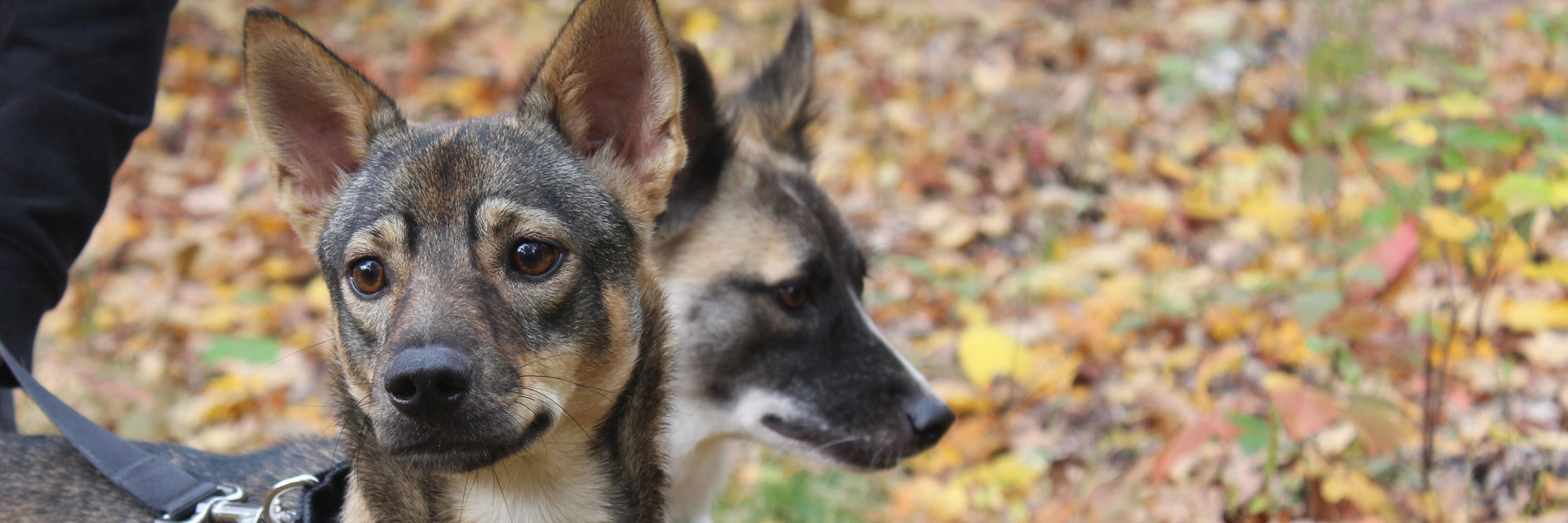
Harvest Mites in Pets
What are harvest mites and how to best protect your pets
As temperatures rise above 16°C in summer and lead into the early days of autumn, dog and cat owners should stay alert — this is prime time for harvest mites to strike.1,2 This tiny mite that is recognisable by its orange-red colour, lurks in pastures and meadows, on forest edges and leaves, bark, shrubs, in overgrown gardens and on tall grasses.4 The mites prefer dry, sunny places, lying in wait for suitable hosts, and latch on as the animals pass through these areas.3,4 Infested animals suffer from intense itching caused by the larvae's saliva. To protect your dog or cat, it is advisable to avoid areas where the harvest mite is prevalent or to keep your cat indoors during peak season.
Learn more
Beware of the larvae
The harvest mite undergoes several developmental stages: it starts as a six-legged larva that hatches from an egg, then progresses to a nymph, and finally becomes an adult mite.4 The larva is the only stage that poses a threat to warm-blooded animals, including our pets, as it feeds primarily during this developmental phase.5 The larva is active during the day, especially on sunny, dry days.3
The larva typically infests its hosts on areas such as the paws, between the toes, on the legs, stomach, chest, snout, and occasionally the ears. Once it attaches to the animal, it begins to feed on it. To do this, it scarifies the skin of its victim with its small hook-shaped mouthparts, injects tissue-dissolving saliva to suck up body fluids (lymph, liquefied skin cells and other bodily fluids).3,6,7 After about a week, the larva detaches from its host animal to continue its development.8,9
Symptoms of infestation
Depending on the number of larvae that have settled on the animal, orange-red spots will be visible on the skin. You should also watch out for the following symptoms:10-12
- Severe itching as a reaction to the saliva
- Wheals and pustules that resemble mosquito bites
- Inflamed areas of skin marked by redness
- Scabs and pus due to the self-inflicted wounds
- Loss of fur due to intensive scratching at one skin site
- Skin injuries due to severe scratching
- Head shaking and sneezing when ears and nose are affected
- Restlessness and tetchiness as a result of severe itching
If you notice any of the symptoms listed above, it's important to have your pet checked and treated by a veterinarian. Persistent itching can lead to self-inflicted injuries or worsen existing wounds, increasing the risk of infection. A vet can not only provide advice for relief but also recommend effective spot-on repellents — such as sprays, drops, tick treatments or collars to help guard against further infestations.13-15
How to protect your pet
To ensure that your dog or cat is protected from the annoying harvest mites, you should take the following preventive measures:
- Avoid places where your dog could potentially come into contact with the larvae
- Keep your cat indoors during this time or allow them to go outside only during the cooler hours of the day (at around 16°C and below), as the nuisances are less active then8
- Check your dog's or cat's coat and skin after every walk or wandering around and wash any infested areas with a damp cloth
- Comb your pet's coat to remove any larvae from it
- Keep the grass in your garden short and remove anything on which you can expect harvest mites to be (e.g. plant waste and leaves)
As harvest mite season is here, it's important to stay vigilant. Take time to understand the risks and implement the right precautions. That way, your dog or cat can enjoy the outdoors safely and comfortably.
Source
2Harvest mite | EBSCO Research Starters. [accessed 2025 Jun 10]. https://www.ebsco.com/research-starters/zoology/harvest-mite
3Harvest Mite Infestations in Dogs [accessed 2025 Jun 11]. https://vcahospitals.com/know-your-pet/harvest-mite-infestations-in-dogs
4Neotrombicula autumnalis. [accessed 2025 Jun 11]. https://flexikon.doccheck.com/de/Neotrombicula_autumnalis
5Chiggers, Jiggers, Harvest Mites, or Red Bugs - Oklahoma State University. 2021 Apr 21 [accessed 2025 Jun 11]. https://extension.okstate.edu/programs/digital-diagnostics/insects-and-arthropods/chiggers-jiggers-harvest-mites-or-red-bugs-trombicula-sp/index.html
6Die Herbstgrasmilbe: Tipps. [accessed 2025 Jun 12]. https://www.esccap.de/die-herbstgrasmilbe-tipps-zum-schutz-vor-der-juckenden-plage/
7Diaz JH. 297 Mites, Including Chiggers.
8Herbstgrasmilben bei der Katze. [accessed 2025 Jun 11]. https://www.esccap.de/herbstgrasmilben-bei-der-katze-wie-man-sie-erkennt-und-was-man-tun-kann/
9Mites | ESCCAP UK & Ireland. [accessed 2025 Jun 11]. https://www.esccapuk.org.uk/page/Mites/35/
10Harvest mites in dogs. [accessed 2025 Jun 11]. https://www.pdsa.org.uk/pet-help-and-advice/pet-health-hub/conditions/harvest-mites-in-dogs
11Harvest Mites on Dogs: Symptoms, Treatment, and Prevention. [accessed 2025 Jun 11]. https://noblevetclinic.com/blog/harvest-mites-on-dogs-symptoms-treatment-and-prevention
12Herbstgrasmilben - Juckreiz bei Hund, Katze, Pferd & Co [accessed 2025 Jun 17]. https://vet.thieme.de/aktuelles/vet-news/detail/herbstgrasmilben-juckreiz-bei-hund-katze-pferd-co-553
13Herbstgrasmilben bei Hund und Katze. [accessed 2025 Jun 17]. https://www.drhoelter.de/tierarzt/tierpflege/herbstgrasmilben-bei-hund-und-katze.html
14How to Get Rid of Chiggers in Dogs. The Spruce Pets. [accessed 2025 Jun 17]. https://www.thesprucepets.com/how-to-get-rid-of-chiggers-in-dogs-6543640
15Herbstgrasmilben bei Hunden [accessed 2025 Jun 17]. https://tierarzt-karlsruhe-durlach.de/herbstgrasmilben-bei-hunden/

